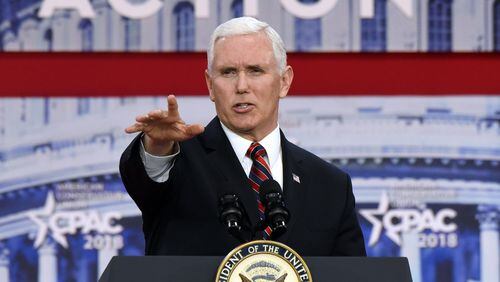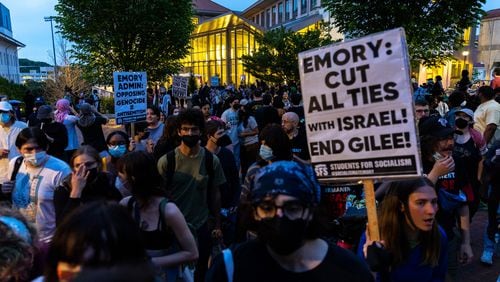PolitiFact recently statistics Vice President Mike Pence cited on terrorist suspects on the Mexican border and claims by two congressmen related to gun violence. Here are summaries of our findings. Full versions can be found at www.politifact.com.
Says that “along the southern border of the U.S.,” the government apprehends “seven individuals a day who are either known or suspected terrorists.”
— Vice President Mike Pence on Saturday, Feb. 17, 2018 in a speech in Dallas
We didn't get fresh information when we asked the White House about the basis of Pence's reference to border apprehensions. Separately, Carlos Diaz, a Customs and Border Protection spokesman, suggested we review that agency's latest count of people apprehended along the U.S.-Mexico border. In January 2018, the month before Pence spoke, CBP says, 35,822 people were apprehended in the region that takes in more than 2,000 miles from Brownsville, Texas, to San Diego. That breaks out to 1,155 people a day.
Best we could tell, though, those statistics don’t include deterred or detained terrorists or suspected terrorists.
Our ruling
We found no facts that back up Pence’s border-specific tally. Nationally in 2017, the federal government says, Homeland Security prevented 2,554 people on its terrorist watch list from entering the country, which breaks out to seven people a day. Most of those tried to enter by air, the government says.
We rate Pence's claim Pants on Fire.
We “have laws on the books designed to prevent people with mental illnesses from getting firearms.”
— Rep. Paul Ryan, R-Wis., on Thursday, Feb. 15, 2018 in a briefing with reporters
Ryan alluded primarily to a 1968 federal law. The federal Gun Control Act, passed after the 1968 assassinations of Robert F. Kennedy and Martin Luther King Jr., prohibits anyone "who has been adjudicated as a mental defective or has been committed to any mental institution" from possessing a firearm.
That’s a small portion of people with mental illness. And it doesn’t account for people who are more likely to be dangerous but have not been adjudicated or committed.
Our rating
A federal law and some state laws do prohibit people adjudicated as “mentally defective” or involuntarily committed to a mental health facility from possessing a gun. But experts say that standard does not account for a much larger set of people who might be dangerous but have not been diagnosed with, or treated for, a serious mental illness.
For a statement that is partially accurate but ignores critical facts that would give a different impression, our rating is Half True.
“Mass shootings went up 200 percent in the decade after the assault weapons ban expired.”
— Rep. Ted Deutch, D-Fla., on Wednesday, Feb. 21st, 2018 in a CNN town hall
At least one researcher found a significant increase in mass shootings since the assault weapons ban expired. But overall, experts caution against pegging an increase solely to the ban’s expiration and told us Deutch’s claim is based on a flawed analysis.
A federal law from 1994 to 2004 banned the manufacture of 19 assault weapons and certain ammunition magazines of more than 10 rounds. Congress did not renew the ban once it expired in September 2004.
Advocates on both sides of the gun debate often point to the same report assessing the ban, published in 2004 for the U.S. Justice Department. The report said it was premature to make a definitive conclusion about the ban's impact. But several experts, including the author of a report Deutch referenced, pointed out flaws in Deutch's relay of that information.
Our ruling
Researchers of mass shootings told us the analysis Deutch relied on is flawed because it did not adjust for population changes and used irrelevant data points for comparison.
Trends in the incidence and severity of mass public shootings on a per capita basis also show that the rate per 100 million is similar now to that of the 1980s and early 1990s, an expert told us.
A separate analysis found an 183 percent increase in mass shootings where six or more people were killed in the decade after the ban, compared with the 10-year ban period. But experts caution against inferring that an increase is due only to the ban’s expiration.
Deutch's claim contains an element of truth but ignores critical facts that would give a different impression. We rate it Mostly False.






